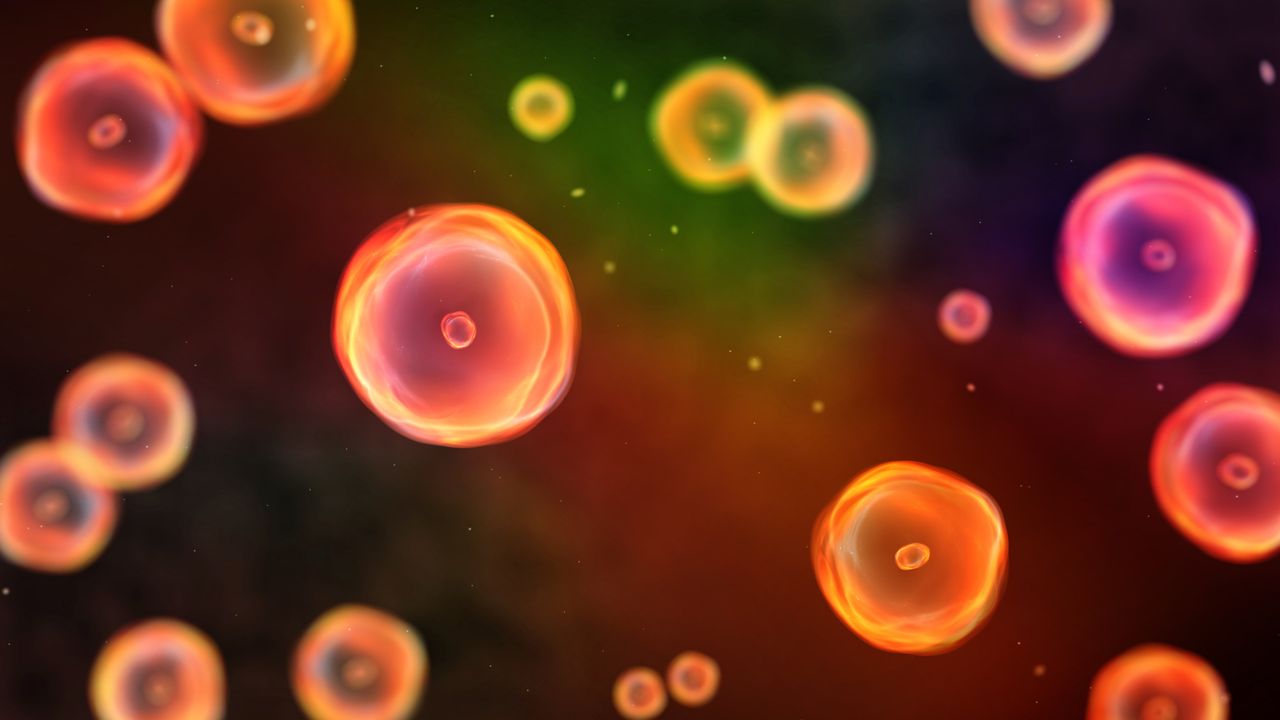
利用空间环境的力量

利用空间环境的力量
To learn more about Mica, how it simplifies microscopy workflows, and some of the areas it could impact the most, Technology Networks spoke to James O’Brien, vice president life sciences at Leica Microsystems.
Ash Board (AB): Mica is described as the world’s first Microhub, can you explain what a Microhub is?
James O’Brien (JO): We decided to call it a Microhub because Mica is so much more than a microscope. A Microhub stands alone as a single easy-to-use digital imaging and analysis hub that guides users from setup to acquisition and to relevant insights. The best analogy we can use to explain what a Microhub is, would be to compare it to an airport hub that brings together passengers and guides them to their destination. In the same way, Mica brings all the users of the lab and their experiments together and guides them to their experimental destinations. Technologies to cover the majority of workflows are together in the Microhub. Mica contains not just widefield and confocal microscope technology, but also combines incubation, machine learning software, automation tools and unique hyperspectral unmixing techniques to automate the imaging workflow in a single product.
AB: Mica eliminates the need for specialist microscopy expertise, how is this achieved?
JO: When setting up your microscope for imaging, you go through an iterative process of multiple steps to get to the first image – and this is not even thinking about making the final image acquisition. Compared to a conventional microscope, Mica reduces the setup steps by over 85% until you reach the first image and a third less time to the overall imaging result. This is accomplished through the automated optimization of imaging parameters that is effortlessly executed using the OneTouch button in Mica. This is the key to making microscopy accessible.

AB: How does the workflow on Mica compare to standard microscopy?
JO: One of the keys benefits Mica will be known for are the radically simplified workflows. Mica will reduce over 60% of the process steps through system intelligence, bringing you from sample to discovery much faster. In a basic confocal experiment with a conventional microscope, we’ve counted 24 steps that you need to perform to take you from setup to results. When using Mica, this workflow is radically simplified into as little as eight steps, reducing the time and effort needed to go from sample to insight.
We have also simplified post acquisition steps. Mica’s pixel classifier that is powered by our AI-based Aivia technology can be easily trained to automatically segment your image simply by marking the object you want to measure. Now you can select which values you want to compare and directly create a visual representation. Additionally, the model generated by your training can be easily transferred and ensures repeatability and reproducibility. You can even enhance existing models through further training.
AB: In what fields do you see Mica having the biggest impact?
JO: We believe Mica will have an impact across all research areas in life science. In all areas, the questions of researchers are becoming more complex while striving for clinical relevance. It is critical to answer these questions in spatial context to get to a deeper understanding. Mica is making microscopy accessible so researchers from any background can leverage the power of spatial context. Take for instance translational research, where functional and structural information need to be correlated in context. An example of this is when utilizing a drug uptake assay where the internalization of the drug is monitored, and the cellular response analyzed. Mica is making these assays accessible.

James O’Brien was speaking to Dr. Ash Board, Editorial Director at Technology Networks.
">
填写下面的表格,我们将向您发送PDF版本的电子邮件“利用空间环境的力量”
随着更多的科学家在研究中寻求空间环境,因此利用复杂成像的需求正在增长。但是,获得专家显微镜的结果可能需要大量的培训和专业知识,因此许多人无法获得。
今天,Leica Microsystems推出了世界上第一个微型布鲁斯云母。这种新的成像解决方案旨在使显微镜民主化,使研究人员能够利用复杂的成像,无论其经验水平如何。
要了解有关MICA的更多信息,它如何简化显微镜工作流程以及可能影响最大的一些领域,捷克葡萄牙直播Leica Microsystems的副总裁Life Sciences与James O’Brien进行了交谈。
Ash Board(AB):云母被描述为世界上第一个微型木材,您能解释一下微型木吗?
詹姆斯·奥布赖恩(Jo):我们决定将其称为微型木,因为云母不仅仅是显微镜。微型公益单独用作单个易于使用的数字成像和分析中心,可指导用户从设置到获取以及相关的见解。我们可以用来解释一个微型公益的最好的类比是将其与机场枢纽进行比较,该机场枢纽将乘客汇集在一起并将其引导到目的地。同样,云母将实验室的所有用户及其实验汇总在一起,并将其引导到实验目的地。覆盖大多数工作流程的技术都在微型布所中。云母不仅包含广阔的田野和共聚焦显微镜技术,还结合了孵化,机器学习软件,自动化工具和独特的高光谱透明技术,以使单个产品中的成像工作流程自动化。
AB:云母消除了对专业显微镜专业知识的需求,这是如何实现的?
乔:在设置显微镜进行成像时,您会经过多个步骤的迭代过程以获取第一个图像 - 甚至没有考虑进行最终图像获取。与常规显微镜相比,MICA将设置步骤降低了85%以上,直到您达到第一个图像,而将整体成像结果的时间减少了第三次。这是通过对成像参数的自动优化来实现的,该参数将使用云母中的OnEtouch按钮轻松执行。这是使显微镜访问的关键。

AB:云母上的工作流与标准显微镜相比如何?
乔:云母的关键优势之一将是从根本上简化的工作流程。云母将通过系统智能减少超过60%的流程步骤,从而使您从样本到发现更快。在与常规显微镜的基本共聚焦实验中,我们计算了您需要执行的24个步骤,以使您从设置到结果。当使用MICA时,该工作流程从根本上简化为八个步骤,从而减少了从样本到洞察力所需的时间和精力。
我们还简化了后收购步骤。由我们的基于AI的AIVIA技术供电的MICA的像素分类器可以轻松地训练以通过标记要测量的对象来自动分割您的图像。现在,您可以选择要比较的值并直接创建视觉表示。此外,您的培训产生的模型可以轻松传输并确保可重复性和可重复性。您甚至可以通过进一步的培训来增强现有模型。
AB:您在哪些领域看到云母影响最大?
乔:我们认为,云母在生命科学的所有研究领域都会产生影响。在所有领域,研究人员的问题变得越来越复杂,同时努力寻求临床相关性。在空间环境中回答这些问题是至关重要的,以深入了解。云母使显微镜可以访问,因此来自任何背景的研究人员都可以利用空间环境的力量。以翻译研究为例,需要在上下文中关联功能和结构信息。一个例子是使用药物吸收测定法,并在监测药物的内在化并分析了细胞反应。云母使这些测定能够访问。

詹姆斯·奥布赖恩(James O’Brien)与技术网络编辑总监Ash Board博士进行了交谈。捷克葡萄牙直播





